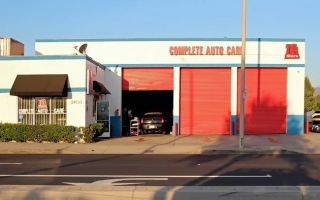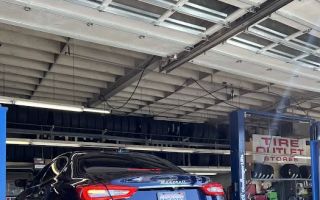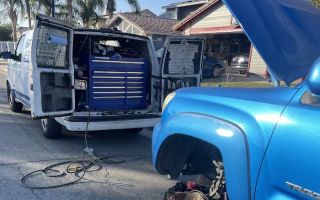How Often Should You Check Tire Pressure to Prevent Flat Tires? A Complete Guide
There’s nothing quite as frustrating as getting into your car, starting it up, and realizing that you have a flat tire. I’ve been in that situation more times than I’d like to admit, and each time, I couldn’t help but wonder: Could this have been prevented? After some trial and error, I learned that the key to avoiding flat tires is regularly checking the tire pressure. But the big question is, how often should you check tire pressure to avoid such inconveniences?
Having driven through some rough patches—both literally and figuratively—I've discovered that tire pressure isn't something most people think about on a daily basis. I used to take it for granted until I had to deal with the hassle of changing a tire on the side of the road. But the truth is, checking your tire pressure regularly can not only prevent flat tires but also improve fuel efficiency and extend the life of your tires. Here’s a deep dive into how often you should check your tire pressure, why it’s important, and what you can do to keep your tires in optimal condition.

MR. TIRE INC.
2078 New York Ave, Huntington Station, NY 11746, USA
Why Tire Pressure Matters
Before jumping into how often you should check tire pressure, it’s important to understand why tire pressure is so crucial. If you’re like I used to be, you may think that as long as the tire looks fine, you don’t need to worry. But there’s more to it than just appearance. Tire pressure plays a major role in a car's overall performance. Here's why:
- Improved Safety: Under-inflated or over-inflated tires are more prone to blowouts and flats. Ensuring that your tire pressure is at the optimal level will greatly reduce the risk of accidents caused by tire failure.
- Better Fuel Efficiency: Tires that aren’t properly inflated require more energy to turn, leading to more fuel consumption. I noticed a significant improvement in my car's gas mileage after I started regularly checking the tire pressure.
- Extended Tire Life: Properly inflated tires wear evenly, leading to a longer lifespan for your tires. I’ve personally managed to extend the life of my tires by keeping them at the right pressure.
- Enhanced Handling: Tires that are properly inflated provide better grip and handling, making for a safer and more enjoyable driving experience. I could definitely tell a difference in my car’s responsiveness when my tire pressure was adjusted correctly.
How Often Should You Check Tire Pressure?
So, how often should you check tire pressure? From my experience, the general rule of thumb is to check your tire pressure at least once a month. But there are a few factors that might require you to check it more frequently:
- Extreme Weather: Hot or cold temperatures can cause tire pressure to fluctuate. In winter, cold air causes the pressure to drop, and in summer, heat can increase the pressure. After a change in seasons, I always make it a point to check my tire pressure.
- Long Road Trips: If you’re planning a long road trip, it’s a good idea to check your tire pressure before you hit the road. I’ve learned that extra miles and road conditions can affect tire performance, so I make sure everything is in check before leaving.
- Frequent Driving on Rough Terrain: If you regularly drive on rough roads or off-road conditions, your tires are more likely to lose pressure. I make it a habit to check the pressure more often if I know I’ll be driving on challenging terrain.
- After Acceleration or Towing: If I’ve been driving with a heavy load or towing something, I’ll check the tire pressure after the trip. The extra weight can cause the tires to wear more quickly and lose air faster.
When is the Best Time to Check Tire Pressure?
I’ve found that timing is everything when it comes to checking tire pressure. Ideally, tire pressure should be checked when the tires are cold. Here’s why:
- Cold Tires: The most accurate reading of your tire pressure occurs when the tires are cold, which means they haven’t been driven on for at least 3 hours. After driving, the tires heat up, causing the air inside to expand, which gives you a false reading.
- First Thing in the Morning: I usually check my tire pressure in the morning before I take the car out for the day. This gives me the most accurate measurement since the tires haven’t been exposed to heat from driving.
How to Check Tire Pressure
Checking tire pressure is simple and only takes a few minutes. Here’s the process I follow every time:
- Get a Tire Pressure Gauge: You’ll need a tire pressure gauge. There are a few types available, including digital and analog versions. I personally prefer the digital ones because they give precise readings.
- Remove the Valve Cap: Unscrew the valve cap from the tire valve on each tire. Keep the caps in a safe place, as they help keep dirt and debris out of the valve.
- Attach the Gauge: Press the gauge onto the valve stem, making sure it’s secure. You should hear a slight hiss of air as the pressure is measured.
- Read the Pressure: The gauge will give you a reading of the current tire pressure in pounds per square inch (psi). The recommended pressure for your car is usually listed in your owner’s manual or on a sticker inside the driver’s door frame.
- Adjust the Pressure: If the pressure is too low, add air using an air compressor. If it’s too high, release some air until it matches the recommended psi.
- Replace the Valve Cap: Once you’ve finished, replace the valve cap securely to keep the valve clean.
Common Mistakes to Avoid When Checking Tire Pressure
Over time, I’ve learned to avoid certain mistakes that can make checking tire pressure less effective:
- Not Checking Pressure Regularly: One of the biggest mistakes I made in the past was forgetting to check tire pressure regularly. This led to under-inflated tires that affected my car’s performance and safety.
- Using an Inaccurate Gauge: Not all tire pressure gauges are created equal. I’ve found that some gauges give inaccurate readings, so it’s important to invest in a high-quality one.
- Ignoring Seasonal Changes: Not accounting for the seasonal temperature fluctuations is something I learned the hard way. I make sure to check tire pressure more frequently as the seasons change.
When to Seek Professional Help
Sometimes, even with regular checks, you might find that your tires are losing pressure more often than usual. If this happens, it’s time to consult a professional. A mechanic can help you figure out if your tires are damaged, if the valve is faulty, or if there's another underlying issue. For tire replacements or repairs, I highly recommend visiting a trusted provider like Rescue & Towing to ensure you're getting the best service.
In conclusion, keeping your tires properly inflated is an essential part of car maintenance. By checking your tire pressure regularly and adjusting it as needed, you can prevent flat tires, improve your vehicle's performance, and extend the lifespan of your tires. Now that I’ve made tire pressure checks part of my routine, I feel more confident on the road and less likely to get caught off guard by a flat tire.
























